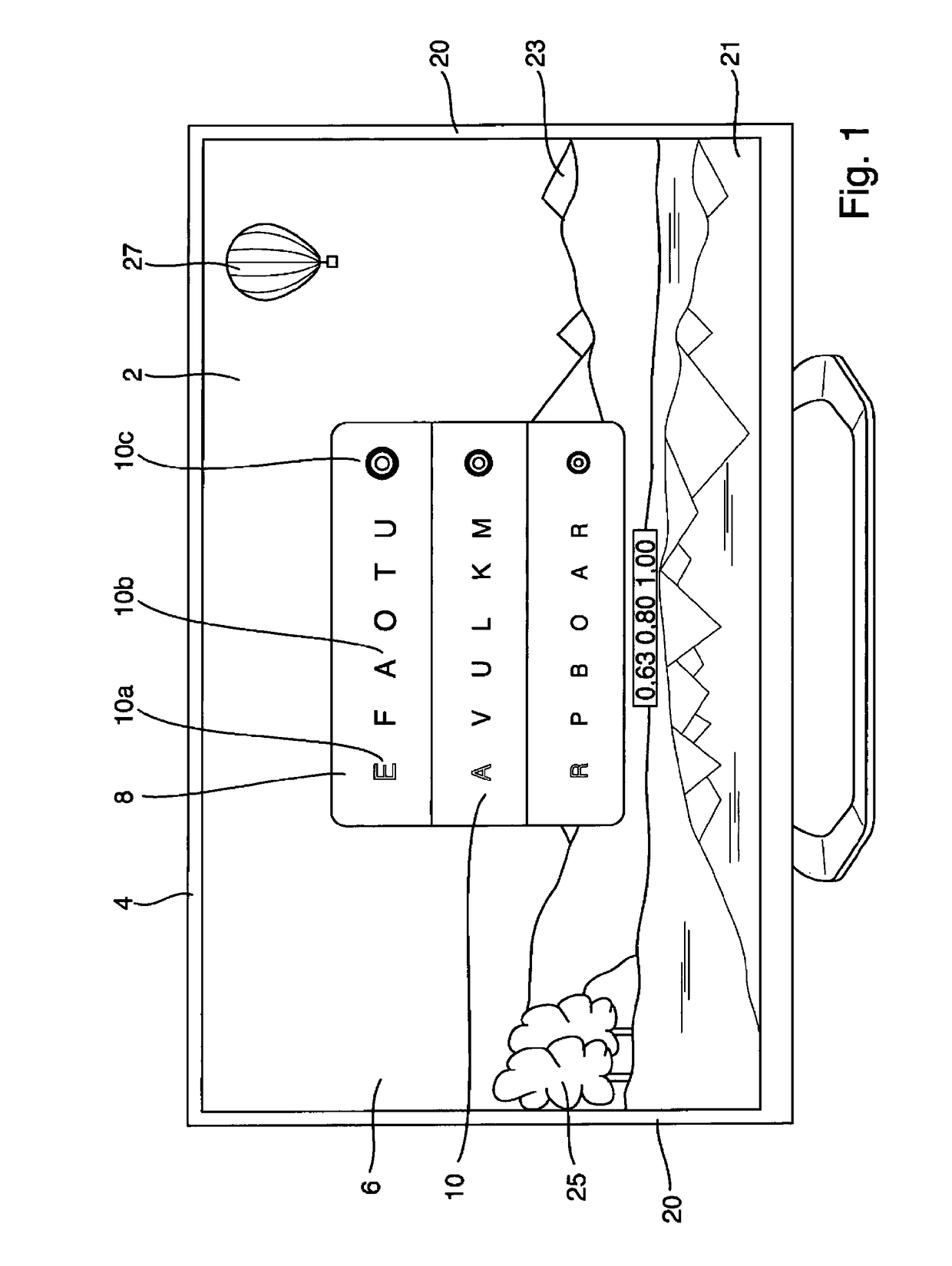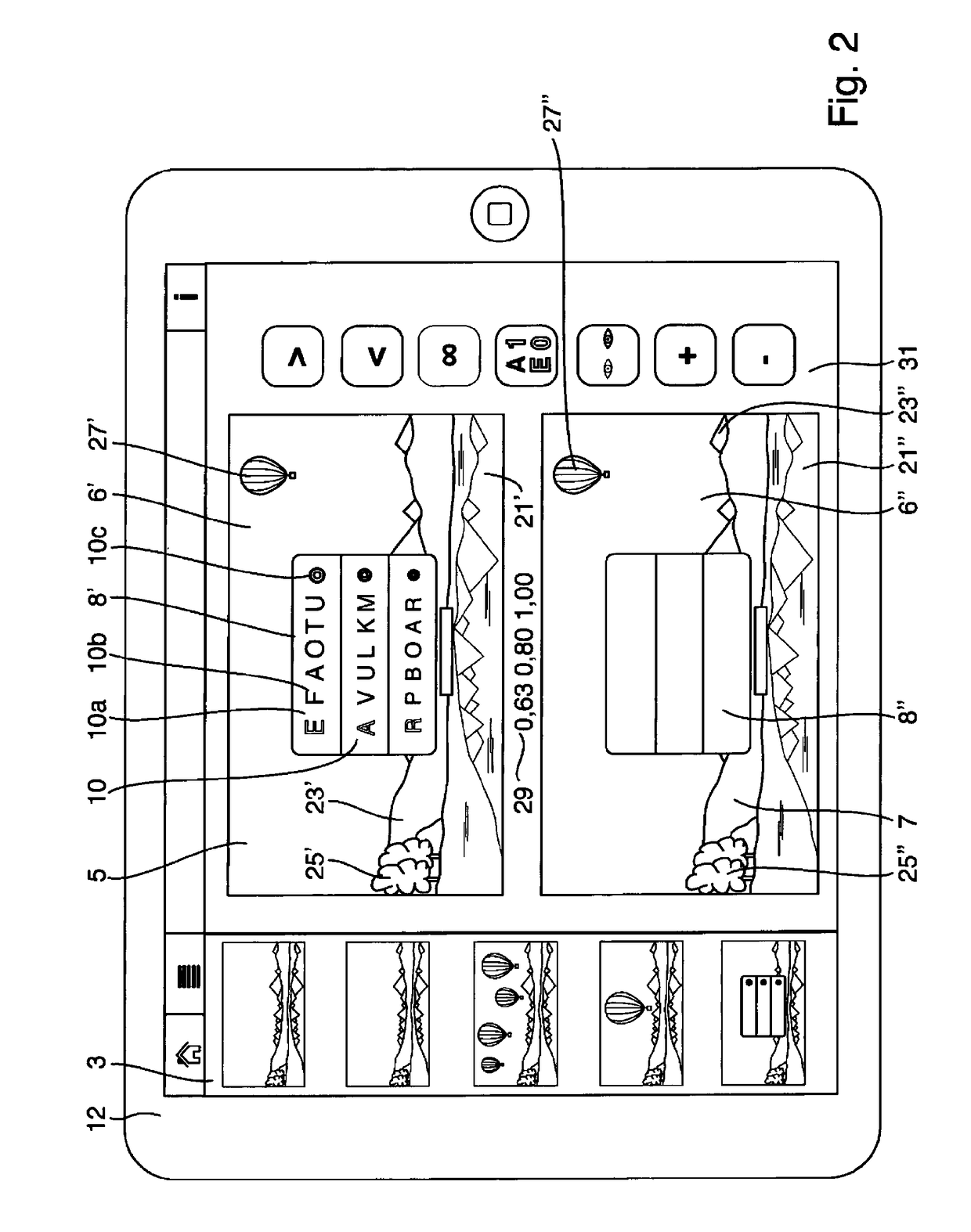Method for representing optotypes, optotype representation, associated use and image output device
a technology of image output device and optotype, which is applied in the field of representation of optotypes, optotype representation, associated use and image output device, can solve the problems of measuring errors, erroneous cylinder values, and a relatively long time, and achieve the effect of short time and avoidance of measuring errors
- Summary
- Abstract
- Description
- Claims
- Application Information
AI Technical Summary
Benefits of technology
Problems solved by technology
Method used
Image
Examples
Embodiment Construction
[0031]FIG. 1 shows an image output device 4 for a visual acuity test and / or the determination of a refraction, said device being set up for optotype representation 2. The image output device 4 comprises a 3D TV with differently polarized light being emitted in each row, so that the optotype representation 2 consists of the superposition of two fields 5, 7—shown in FIG. 2.
[0032]FIG. 2 shows a control unit in the form of a tablet computer 12 to control the image output device 4, with the tablet computer 12 having a software to control the image output device 4. According to the FIGS. 1 and 2, the first field 5 comprises a first image section 6′ showing a landscape with a lake 21′, mountains 23′, trees 25′ and a hot air balloon 27′. Within the first image section 6′, there is an optotype chart 8, with optotypes 10 being arranged in the form of a relatively large letter “E”10a, in the form of five smaller letters “F, A, O, T, U”10b and in form of a circular FIG. 10c in a horizontal line...
PUM
 Login to View More
Login to View More Abstract
Description
Claims
Application Information
 Login to View More
Login to View More - R&D
- Intellectual Property
- Life Sciences
- Materials
- Tech Scout
- Unparalleled Data Quality
- Higher Quality Content
- 60% Fewer Hallucinations
Browse by: Latest US Patents, China's latest patents, Technical Efficacy Thesaurus, Application Domain, Technology Topic, Popular Technical Reports.
© 2025 PatSnap. All rights reserved.Legal|Privacy policy|Modern Slavery Act Transparency Statement|Sitemap|About US| Contact US: help@patsnap.com



